 Politics
Politics  Politics
Politics  Health
Health 10 Ways Your Brain Actually Changes in Warmer Weather
 Humans
Humans 10 Crazy Cultural Practices from Deep History
 Technology
Technology 10 Low-Tech Solutions Beating High-Tech in Developing Regions
 Technology
Technology Ten Disturbing News Stories Involving Chatbots
 Miscellaneous
Miscellaneous 10 Genius German Words with No English Equivalent
 Movies and TV
Movies and TV 10 Movie Releases That Caused Chaos in Theaters
 Humans
Humans 10 People Who Were Attacked for the Clothes They Wore
 History
History 10 Historical Connections That Don’t Seem Real but Are
 Music
Music 10 Fictional Bands with Real Hit Songs
 Politics
Politics 10 Political Terms With Curious Origins
 Health
Health 10 Ways Your Brain Actually Changes in Warmer Weather
 Humans
Humans 10 Crazy Cultural Practices from Deep History
Who's Behind Listverse?

Jamie Frater
Head Editor
Jamie founded Listverse due to an insatiable desire to share fascinating, obscure, and bizarre facts. He has been a guest speaker on numerous national radio and television stations and is a five time published author.
More About Us Technology
Technology 10 Low-Tech Solutions Beating High-Tech in Developing Regions
 Technology
Technology Ten Disturbing News Stories Involving Chatbots
 Miscellaneous
Miscellaneous 10 Genius German Words with No English Equivalent
 Movies and TV
Movies and TV 10 Movie Releases That Caused Chaos in Theaters
 Humans
Humans 10 People Who Were Attacked for the Clothes They Wore
 History
History 10 Historical Connections That Don’t Seem Real but Are
 Music
Music 10 Fictional Bands with Real Hit Songs
10 Toxic Bodies Of Water
The sight of a calm, pristine lake, river, or beach is enticing to many. Whether it’s for fishing, swimming, boating, or just relaxing, bodies of water have always drawn people in. Sometimes, however, dipping one’s toes in that water isn’t at all recommended.
Lakes, rivers, and lagoons can become a threat to both animal and human populations. Causes include industrial pollution, human waste, bacterial growth, and even Mother Nature’s temper. Here are ten bodies of water that can cause some serious damage.
10 Blue Lagoon Not Suitable For Swimming
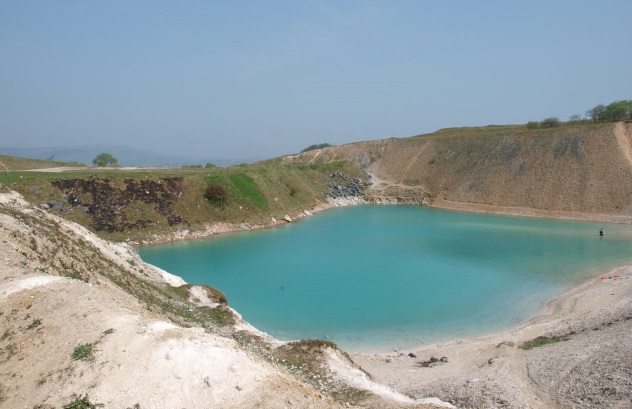
Looks can be deceiving, even when it comes to water. This is the case with the Blue Lagoon of Buxton, England. The “lagoon” is the disused Far Hill Quarry, which flooded and became a popular swimming spot. People are drawn to the brilliant blue water that looks as if a Caribbean oasis sits in the middle of Derbyshire. But in reality, the blue water is extremely toxic.
The turquoise color comes from chemicals leaching into the water from the limestone rocks. Calcium oxide, used as a part of the quarrying process, gives the lagoon a pH level roughly comparable to ammonia. One of the many signs warning visitors not to enter the water cautions that the high pH levels can cause skin and eye irritation, stomach problems, fungal infections, and rashes. On top of the chemicals, the lagoon has also been used as a dumping ground. Another sign posted near the area reads: “Lagoon known to contain: Car Wrecks, Dead Animals, Excrement, Rubbish.”
Despite warnings about the toxicity and unsanitary conditions, families continue to flock to the Blue Lagoon. Children are allowed to swim with the simple warning not to dunk their heads or swallow any water. Locals wanted to drain the flooded quarry but were told that doing so would pose a threat to their water supply. In June 2013, the town council dyed the lagoon black to deter swimmers, but by 2015, the water had reverted to its turquoise color.[1]
9 Lake Titicaca Kills Endangered Frogs
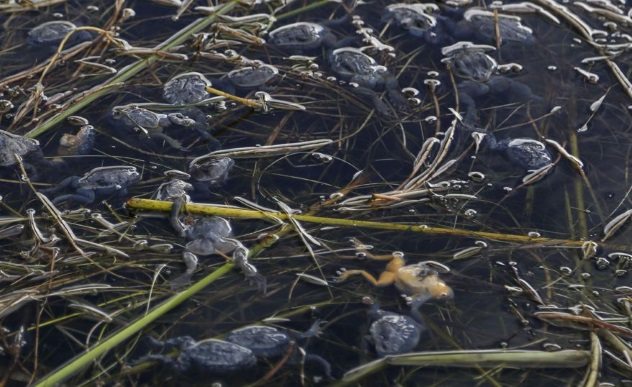
South America’s largest lake has become contaminated by human and industrial waste. Lake Titicaca lies between Peru and Bolivia. It was one of the most sacred sites for the Incas, who believed the lake was the birthplace of the Sun. Now, heavy metals such as lead and arsenic pollute the water. Many of the industrial toxins come from El Alto, where 70 percent of factories operate illegally and are not monitored for pollution.
In addition, more than half of the people living on the shores of Lake Titicaca do not have plumbing.
In 2015, an estimated 10,000 endangered frogs were found dead on the shores of Lake Titicaca and its connecting river. The Titicaca water frog is one of the largest aquatic frogs in the world. Because of its baggy skin, the frog is often referred to as the “scrotum frog.” The cause of the massive die-off is thought to be the sewage and heavy metals that pollute the lake.[2]
8 Pinto Lake Kills Sea Otters And More
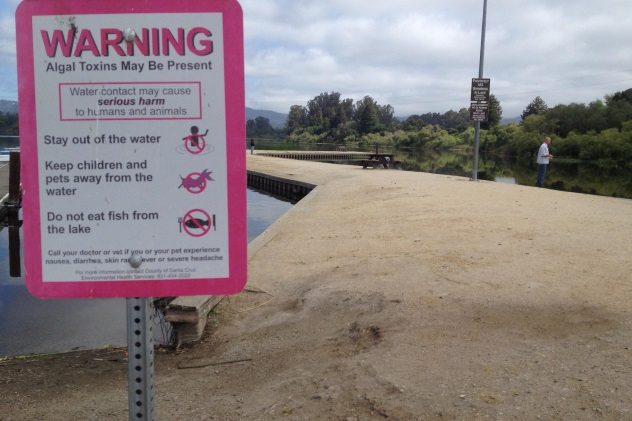
Located in Watsonville, California, Pinto Lake has been referred to as the most toxic lake in the state, thanks to an abundance of blue-green algae.
The algae, also known as cyanobacteria, feed on nitrogen and phosphorus. These chemical elements exist in sediments at the bottom of Pinto Lake. Bottom-feeding fish such as carp stir up the nitrogen and phosphorous, which release into the water, feeding the algae blooms. These blooms produce a toxin called microcystin.
Touching or ingesting microcystin can cause nausea, fever, and even liver failure. The toxin has been linked to the deaths of birds, fish, sea otters, and dogs in the area. Signs are posted warning that any direct contact with the water is dangerous, and people are also cautioned not to eat any fish caught in Pinto Lake.[3]
7 Buriganga River Suffocates Fish
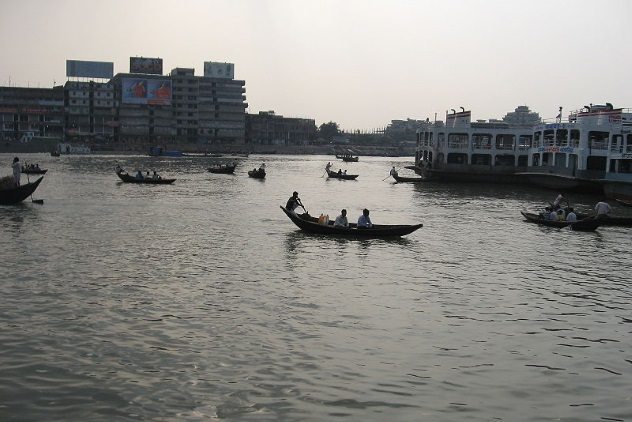
The Buriganga River in Bangladesh flows though the capital city of Dhaka and is their primary water source. It is also the primary dumping ground for waste from the tanneries in Hazaribagh, a neighborhood in Dhaka. Hazaribagh is home to 95 percent of Bangladesh’s leather tanneries. These tanneries dump an estimated 22,000 liters (5,300 gal) of toxic waste into the Buriganga each day.[4]
Tannery waste contains animal flesh and hair as well as numerous chemicals, dyes, oils, and heavy metals. Bangladesh does have environmental regulations, but there has been a complete lack of monitoring and enforcement. Samples of wastewater taken from tanneries contain chemicals and toxins that greatly exceed the permitted amounts. In 2002, the government ordered Hazaribagh tanneries to relocate outside of Dhaka within three years. The deadline has been extended for over a decade.
Trash collects in heaps along the shores of the Buriganga, and the water is so polluted that all the fish have died. Especially in the slums of the city, many residents use the river for bathing, cooking, and even drinking. People who depend on the river’s water often suffer from health problems such as headaches, diarrhea, and jaundice.
6 Karymsky Lake Boils Its Inhabitants
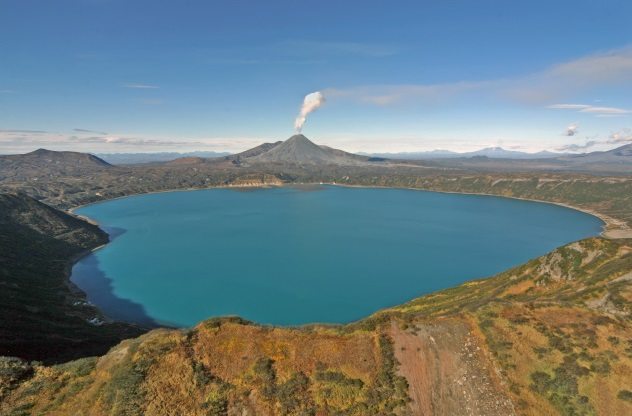
The Kamchatka Peninsula is located in far-eastern Russia. It contains a number of active volcanoes, as well as geysers and hot springs.
One of the most active volcanoes is called Karymsky, which lies about 5 kilometers (3 mi) north of Karymsky Lake. The lake was created when a massive eruption of the volcano emptied out a magma chamber, leaving behind a caldera that filled with water. The caldera was thought to be dormant, until it erupted in 1996.
The Karymsky volcano erupted first, around midnight on January 2. Later that afternoon, the lake began to explode. The underwater eruption caused steam and ash to spew into the air for about 18 hours. The erupted material landed back in the lake, creating a soup of sodium, sulfate, calcium, and magnesium. The water in the lake was actually boiling. The extreme temperatures and additional chemicals killed all life in the lake.
Before the eruption, Karymsky Lake was filled with clear water that had a pH level of 7.5. After the eruption, the water turned a yellowish-brown color and had a pH level of 3.2. The freshwater lake had become the biggest natural reservoir of acid water in the world.
By 2012, Karymsky Lake had regained a pH of 7.54, and the water was once again clear. However, new hot springs that appeared during the eruption keep the lake three times saltier than it was before.[5]
5 Matanza-Riachuelo River Poisons Residents
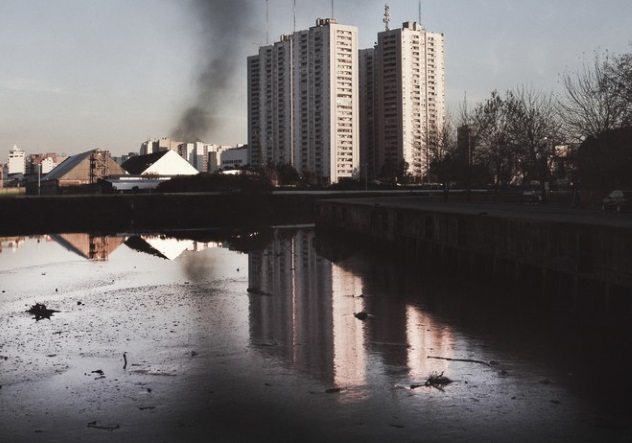
The Matanza-Riachuelo, which literally translates to “slaughter brook,” runs through Buenos Aires, the capital city of Argentina. Having been used as a dumping site for waste and sewage, the river has become one of the most polluted waters in the world.
The Matanza-Riachuelo is lined by urban slums that house close to five million people. Tanneries, chemical plants, and factories dump an average of 82,000 cubic meters (2.9 million ft3) of industrial waste containing hard metals and pesticides into the river each day. As a result, 25 percent of children living in these slums have lead in their bloodstreams.
There is a lack of plumbing in the riverside slums. Some homes have outhouses with drainage pipes that lead directly into the Matanza-Riachuelo. Residents suffer from undiagnosed skin conditions, respiratory problems, and gastrointestinal illnesses so severe they can lead to death.
In 2005, an Argentine environmental minister vowed to have the Matanza-Riachuelo cleaned up within 1,000 days, adding that she would be the first to drink the water. Neither of those things happened.[6]
4 Berkeley Pit Mass-Murders Snow Geese
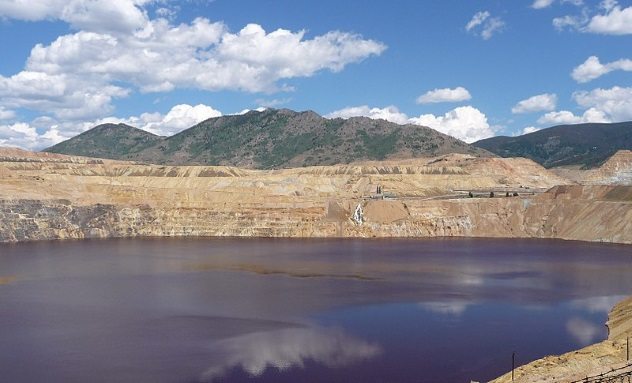
On November 28, 2016, a large flock of geese landed on a small body of water in Butte, Montana, known as Berkeley Pit. It is estimated that roughly 10,000 geese landed in the water, and thousands of them died.
Berkeley Pit is a former mine where nearly 300 million tons of copper were extracted between 1955 and 1982. The process created a deep pit that eventually filled with 275 meters (900 ft) of water. The water is full of arsenic, cadmium, cobalt, copper, iron, and other compounds.
2016 was not the first time Berkeley Pit became a massive snow goose grave. In November 1995, 342 dead geese were discovered floating in the pit. Postmortem examinations revealed that the cause of death was due to the water, which is acidic enough to liquefy the steel propeller on a motorboat. The birds had burns and sores on their trachea, esophagus, and digestive organs.
As the water level in Berkeley Pit continues to rise, so do concerns about contamination. The water is scheduled to reach the level of Butte’s groundwater by 2023. If a successful treatment plan is not implemented before then, the pit pollution will enter the local water source.[7]
3 Yamuna River Dies In Delhi
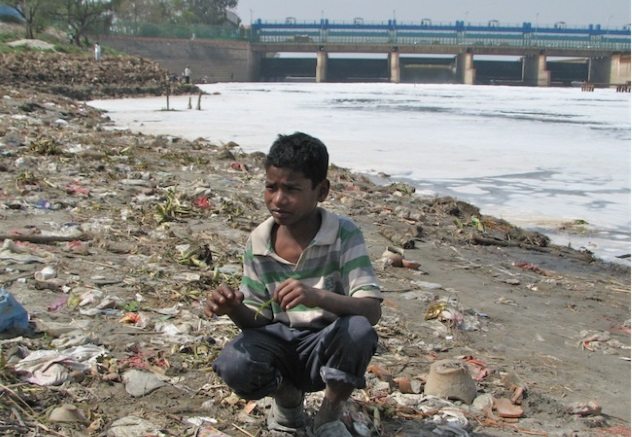
The Yamuna River begins as crystal-clear water that comes from a glacier in the Himalayas. North of Delhi, the river is home to turtles, fish, crocodiles, and numerous aquatic plants. But the Yamuna that enters the city is not the same river that emerges.
River water is diverted north of Delhi to supply one-third of the city’s drinking water, and it is also siphoned off to irrigate rice fields. This leaves nearly dry riverbeds, which are replenished with pollution and sewage.
Data from a 2011 water quality report showed that water leaving Delhi contained over one billion fecal coliform bacteria per 100 milliliters. The standard for bathing is 500 coliform bacteria per 100 milliliters. More than five million Delhi residents live in illegal settlements that lack sewer service. They defecate in places that drain directly into the river. Industrial waste containing heavy metals and other pollutants are dumped into the river daily.
In Hinduism, the Yamuna is not just a river but a goddess. The sad state of the Yamuna bothers some believers, who say that the goddess is dying and in need of help. Others maintain that because the river is a goddess, she can never be polluted, no matter how bad she is physically mistreated.
It might be debated whether or not the goddess is dying, but there is sufficient proof of the river harming mortal entities. The 23-kilometer (14 mi) stretch of the Yamuna that runs through Delhi has no aquatic life. The tainted river is responsible for numerous cases of typhoid fever as well as an unusually high infant mortality rate. Heavy metals in the water leach into local fields and contaminate vegetables, causing children in the area to suffer and even die from arsenic and lead poisoning.[8]
2 Lake Natron Mummifies Its Victims
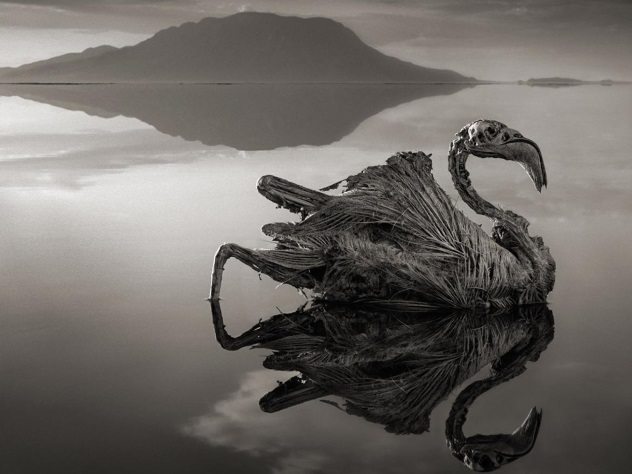
Lake Natron is a salt lake located in Northern Tanzania near the Kenyan border. The lake is named for a chemical it contains, natron, which is a naturally occurring mix of sodium carbonate and sodium bicarbonate (aka baking soda).
Lake Natron’s chemical makeup is due to a unique nearby volcano. Ol Doinyo Lengai, or “Mountain of God,” is the only active volcano on the planet that spills natrocarbonatites instead of silicates. The lava from Ol Doinyo Lengai is not as hot as lavas from other volcanoes. It also has a different appearance, resembling an oil spill more than flowing magma. When the lava cools, it turns into a whitish powder. Rainfall runoff collects the ashy residue and deposits it in Lake Natron. This gives the water a pH level that fluctuates between 9 and 10.5. Temperatures in the lake can reach 60 degrees Celsius (140 °F) during warmer months.
Photographer Nick Brandt came across the lake while on a photo shoot for a book about East Africa. Brandt was “blown away” when he saw the hundreds of carcasses the littered the shore. The remains consisted largely of bats and migratory birds. Birds often crash into the shallow lake, which is less than 3 meters (10 ft) deep. It is thought that they become confused by the lake’s highly reflective surface. Once the birds die in the lake, their skeletons are preserved by the sodium carbonate in the water. The chemical, which was used in Egyptian mummification, prevents the carcasses from decomposing. When water levels recede, the remains wash onto shore in their preserved state, which is what Brandt came across. With the help of locals, Brandt collected a variety of corpses and posed them in lifelike positions to create an eerie photo series.[9]
Despite the corrosiveness of Lake Natron, one species uses it as a popular breeding location. Flamingos have very leathery skin on their legs, which allows them to tolerate the salty water. Lesser flamingos, the smallest of their kind, build nests on top of salt crystal islands that appear when the lake is low enough. The nests are protected by their location in the middle of the lake. Predators such as cheetahs and baboons are deterred by the caustic water, which keeps the baby birds safe.
1 The Jacuzzi Of Despair Is An Underwater Menace
The Jacuzzi of Despair is an underwater lake located in the Gulf of Mexico. The lake lies 1,000 meters (3,300 ft) under water, on the seafloor.
Underwater lakes, also known as brine pools, form when salts leach from ancient seabeds. The salt makes the water in one area extremely briny, until it is so dense that it doesn’t mix with the surrounding seawater. This results in an underwater lake that has its own surface, shoreline, and current.[10]
The Jacuzzi of Despair is a crater-like pool that rises 3.7 meters (12 ft) above the ocean floor. It was named for its warm temperatures. The water in the lake is around 18 degrees Celsius (65 °F), while the surrounding seawater is only 4 degrees Celsius (39 °F).
Mussels thrive along the shoreline, but the extreme amounts of salt and methane in the lake itself are toxic to most sea creatures. The warmth of the lake attracts marine life, such as crabs, looking for food. If they fall into the Jacuzzi of Despair, they die.
While most sea creatures cannot survive the lake’s conditions, researchers have found proof of microbial life in the Jacuzzi of Despair. Scientists believe these creatures that adapted to the underwater lake may resemble life-forms that thrive on other planets.
Read about more terribly toxic and polluted places on Top 10 Toxic Ghost Towns and Top 10 Most Dangerous Places To Visit Thanks To Humans.








